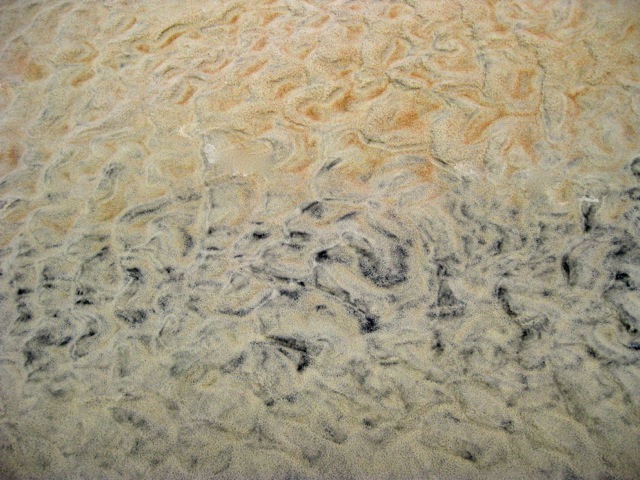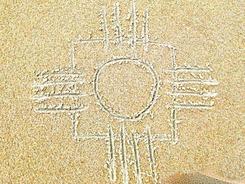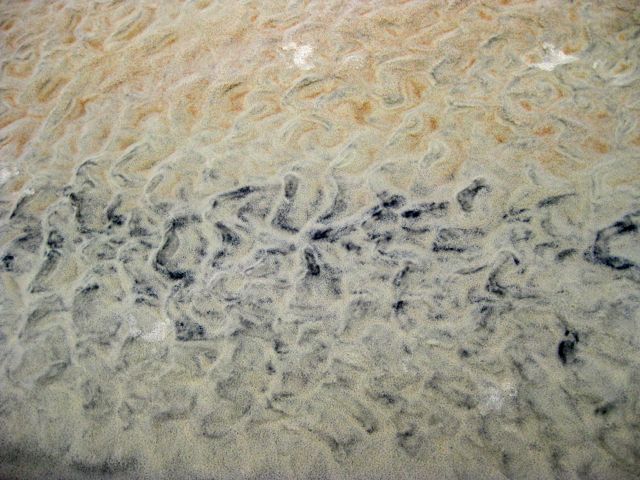Meet the Teachers
Florida Sandplay Therapy Association
SandSearch.org
Interview with Gita Morena, LMFT
By Bunnie Graham
February 2014
Dr. Morena is a transpersonal psychotherapist and has worked as a Licensed Marriage and Family Therapist for over 35 years. Besides sandplay® work, she offers yoga and meditation classes, is the author of The Wisdom of Oz: Reflections of a Jungian Sandplay Psychotherapist, and Program Coordinator for the University of California’s Professional Program in Sandplay Therapy Studies. Gita acts as a guide for rekindling the natural healing powers within.
Gita, how did you first become interested in sandplay therapy?
My mother was an RN and had heard about sandplay. She thought I might be interested in it, and we attended the second national conference together. I was immediately hooked, and found a sandplay therapist in San Diego to begin my own process to see how it worked. Susan MacNofsky and Sherry Shepard were my first teachers, and I found sandplay touched places internally that could not be accessed any other way. I loved it!
What sustains your interest in sandplay therapy today?
It has been wonderful to meet so many like-minded therapists who are now my friends. I continue to be astounded with the depth and transformational power that clients report after working in the sand, and find the neurological research that supports this approach to be fascinating and tremendously validating. I find it particularly rewarding to teach about sandplay in the midst of this cognitive tidal wave.
How does sandplay inform your life — in other words, why do you teach it?
I am dedicated to teach methods that deeply transform people, and sandplay is certainly one of those methods. I learn from my students and their cases, as much as I learn from my own clients.
Have you a favorite Dora story or quote?
Although I had heard about Dora, I did not train with her. I was focusing on my own art and music when she was coming to the U.S., and realized I would be a “second generation” sandplay therapist.
How do Dora stories teach us about sandplay?
It is always interesting to hear about the personal relationships that people had with Dora. Sandplay is so much about establishing a safe and protected place for our clients, and stories about Dora help us see how that occurs. I am a friend of Martin Kalff, and my relationship with him gives me a unique perspective of sandplay and how it works.
What would you say are some essentials of sandplay therapy?
Providing a safe and protected space is essential for sandplay therapy. It becomes a non-directive approach for adults as well as children to explore their inner world in a way that words cannot do. The insight that comes by using imagery for self-expression allows a deepening and inner connection that cannot happen any other way, and is profoundly transforming.
As a sandplay teacher, what is your main goal for students to learn?
To develop respect, sensitivity and an ability to hold the tensions that arise as clients explore the pain and confusion of their inner worlds. This requires the therapist to have explored the depths of their own inner world, and I encourage students to do this when I teach. I teach in a Socratic way, stimulating students to find their own inner wisdom by looking at their personal experiences in and out of class.
Do you learn something as you teach sandplay therapy?
Always. It is so enlightening and broadening to hear about students’ experiences with sandplay, their clients, and their own insights into the process.
How does teaching sandplay inform your own practice with clients?
It has taught me how to look beneath the surface to see what is going on in the invisible realms of the unconscious. This vision allows me great sensitivity to what others are going through. Understanding the complexity of the many dimensions a person is dealing with gives me the patience necessary to be present with them on their journey.
How does co-transference show up in the STI classroom?
I believe effective teaching, just like effective therapy, is all about the relationship. Mutual respect and connection are essential, I think, and are the essence of the co-transference experience.
Is there a religious (as used in Jung's work) aspect to sandplay?
I find the process of completing a tray to be quite meditative for people. It provides a space to go within and see whom you are in a way that does not happen through words or in daily life. This deep connection allows a person to open to an expanded reality that often stimulates a spiritual awakening.
Does your particular typology affect the way you teach sandplay?
As an INFP, I try to create a safe space for students to be reflective, share and participate without any pressure or external expectation.
How do you see sandplay evolving over time?
Sandplay is one of the few ways that provides a safe way to work with trauma and integrate inner conflicts to establish psychological wholeness. As the limitations of cognitive therapies manifest, I imagine non-verbal therapies like sandplay will become more popular. The brain research certainly supports this, which is wonderful.
Fostering growth & healing through symbolic process




